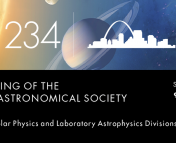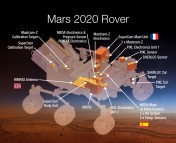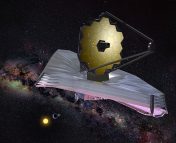The last decade has seen spacecraft visit asteroids, land on comets, and flyby Pluto and another Kuiper Belt Object. And science has also developed at a breathtaking pace: the number of confirmed exoplanet detections has increased by a factor of eight thanks to Kepler, 1.7 billion stars had their positions measured with amazing accuracy with GAIA, and history was made with the first detection of gravitational waves using LIGO.
The 2020s promise to bring more exoplanet detections, precise stellar position measurements, and gravitational wave detections, but also a new host of space missions. From near-Earth to the beginning of the universe, over thirteen NASA and ESA missions plan to launch in the 2020s. So what can we expect?
Era of the Infrared: Probing the Cosmos
More than once when running late, I’ve apologized and joked that I’m just running on “JWST time.” Originally planned to launch in 2007, the James Webb Space Telescope has seen a major redesign and many, many delays. However, the current planned launch date is March 2021. JWST is a large infrared telescope with a 6.5-meter primary mirror. To launch such a large telescope into space requires some tricky maneuvering, and it’s worth looking at how the deployment will happen:
JWST will be located at a stable orbital point, known as L2, between the Sun and Earth, far enough away that we won’t be able to send astronauts out to fix it. If all goes right (and we are all holding our breaths and $10 billion sunk cost), JWST will be able to take images of the very first stars and galaxies as well as exoplanet atmospheres, leading to a greater understanding of the evolution of galaxies and planetary systems
JWST isn’t the only thing extragalactic astronomers have to be excited about though. Euclid is a European Space Agency mission that plans to study distant galaxies. Weak gravitational lensing and baryonic acoustic oscillation measurements will be used to probe the history of the universe’s expansion and the distribution of dark matter. Euclid has a planned launch date of June 2022.
The Spectro-Photometer for the History of the Universe, Epoch of Reionization and Ices Explorer (SPHEREx) is a NASA mission that will use near-infrared light to survey over 300 million galaxies for water and organic molecules in regions where new stars and planets are forming. The goal is to discover whether the ingredients for life are common in galaxies like the Milky Way. SPHEREx is planned to launch on New Year’s Eve in 2023 and has an estimated mission duration of two years.

The Wide Field InfraRed Survey Telescope (WFIRST) is a NASA mission with a planned launch date in 2025. Over the course of its planned 5-year mission, the instrument will observe over a billion galaxies and will survey the inner Milky Way for exoplanets with microlensing and direct imaging. To take a direct image of an exoplanet, WFIRST will be outfitted with a coronograph that will block the host star’s light. For more on the coronagraph instrument, see this video:
The Solar System: Searching for Life and Other Odd Things
Mark this year’s calendars for late July 2020, NASA is sending another rover to Mars! The still-unnamed rover has been referred to as the “Mars 2020 Rover,” but not for long. The rover’s name will be decided in a public poll in January (check here for updates). When it lands on Mars in February 2021, the rover will explore a part of Mars’ surface that may have once been favorable for microbial life. Equipped with a drill, the rover will collect approximately 30 samples of Martian soil and rock, depositing them on the surface for a possible future collection and return mission. Meanwhile, the rover will analyze the chemical and physical makeup of Martian rocks, helping it decide where to go next. You can watch a livestream of the rover’s assembly here:
The European Space Agency also plans on going to Mars this summer with its ExoMars missions. The first, an orbiter, launched and arrived in 2016. The second mission will deliver a European rover and a Russian surface platform. The ExoMars rover will, like Mars 2020, be searching for traces of past microbial life and is equipped with a drill. The rover will use the 2-meter drill to collect samples and analyze their chemical and mineralogical makeup.
Traveling a bit further out will be NASA’s Europa Clipper mission. With a TBD launch date in the 2020s, this mission will fly out to Jupiter’s moon Europa. Europa is known for its icy surface that may be harboring a subsurface ocean of liquid water. The Clipper mission will perform repeated flybys of the moon. Measurements of ice thickness (using radar), magnetic fields and gravity will provide evidence and details of whatever liquid water may be hiding under Europa’s surface.
The Psyche mission will travel to the asteroid belt to visit a world unlike any other we’ve visited so far. Unlike other asteroids, Psyche is made of metal. Such large chunks of metal are usually found at the center of planets, which led astronomers to wonder whether Psyche was actually the core of a failed planet. If this is the case, Psyche offers the opportunity to investigate the core of planet much like Earth’s, although Earth’s core is inaccessible. This mission is led by Arizona State University, with mission management, operation and navigation provided by NASA’s Jet Propulsion Laboratory. The mission will launch in 2022 and arrive at Psyche in 2026.
To the Moon Again
The Lunar Flashlight is a small CubeSat, one of many. But it will be the first to reach our Moon and will use lasers to search for water ice. This mission is remarkable because it offers the potential for a low-cost way to search for water on the Moon. If humans are ever going to build a base on the Moon it will be key to know where water can be obtained, and this is only a first step. It will launch in late 2020 or early 2021 with Artemis-1, the first flight of NASA’s Artemis Program. To understand why and how this is happening, you can watch this exciting video from NASA:
The Artemis Program will take astronauts back to the Moon in preparation for future human exploration of Mars. Artemis-2 is planned to be the first manned mission to leave near-Earth orbit since 1972, launching 50 years later in 2022. The current plan is for it to bring four astronauts in orbit around the Moon. Finally, in 2024, Artemis-3 is planned to bring the first woman and the next man onto the lunar surface. Whether everything actually goes as planned, we’ll just have to wait and see.
Earth: Pollution, Volcanoes, and Weather, Oh My!
Many upcoming NASA missions will come even closer to home. The Multi-Angle Imager for Aerosols (MAIA) will take measurements of the size and composition of particulate matter in the atmosphere. By combining this information with health records, scientists hope to gain a better understanding of the connection between air quality and health problems. MAIA will launch in 2022 and stay in an orbit around Earth.
The Indian Space Research Organization (ISRO) and NASA are teaming up to bring the NASA-ISRO Synthetic Aperture Radar (NISAR) to Earth orbit in 2022. This mission will be able to image the Earth in unprecedented detail and take measurements of complex processes such as earthquakes, tsunamis, and volcanoes. Understanding these processes and how they are changing with the climate is key for preparing for natural disasters and future hazards.

It’s nearly 2020, and nobody’s made a global map of Earth’s surface water yet, can you believe it? Well never fear, because SWOT (Surface Water and Ocean Topography) is here. In 2021, SWOT will begin orbiting the Earth to take measurements of our world’s oceans, lakes, rivers, and reservoirs every 21 days. This will improve our understanding of weather and climate models as well as ocean circulation. This mission is a joint partnership between NASA and Centre National d’Etudes Spatiales (France) with contributions from the Canadian Space Agency and United Kingdom Space Agency.
The next decade certainly has a lot to offer, and this is just what we know about now. Missions get added, delayed and canceled all the time. Be sure to check NASA’s websites for updates on your favorite missions.





Thanks for the comprehensive mission listing for the next decade. We are using your list as a discussion topic at our next AS meeting.